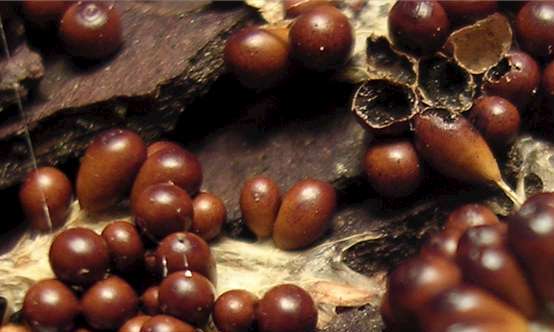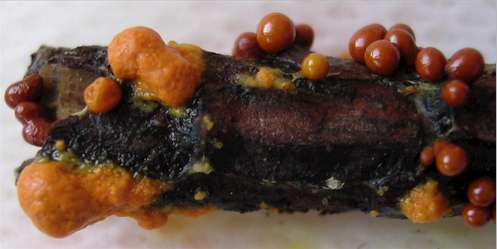..
PLASMODIAL AND CELLULAR SLIME MOLDS - CONTINUED There is a wide variety of plasmodial slime molds, which differ in their spore-bearing stages. The images below show some of this diversity.
Fig 1. Leocarpus fragilis, a slime mold that produces numerous egg-like fruiting structures, each about 2 mm diameter, attached to the substrate by a stalk. The organism was growing on a mixture of pine needles and wood debris under a stand of pines. The stalked fruitbodies have a hard, shell-like casing, giving rise to te common name for this species - the "insect egg slime mold". [© Jim Deacon]
Fig 2. The same slime mold showing (top right) some of the sporangial cases broken to reveal the dark spore mass.[© Jim Deacon]
Fig 3. The early aggregation stage of Leocarpus fragilis, as the slime mold migrates from beneath the soil and produces yellow, slime-like masses on structural supports - in this case shed pine needles. [© Jim Deacon]
Fig 4. Part of the same slime mold photographed 24 hours later, showing the transition towards development of the "insect eggs". [© Jim Deacon] |



